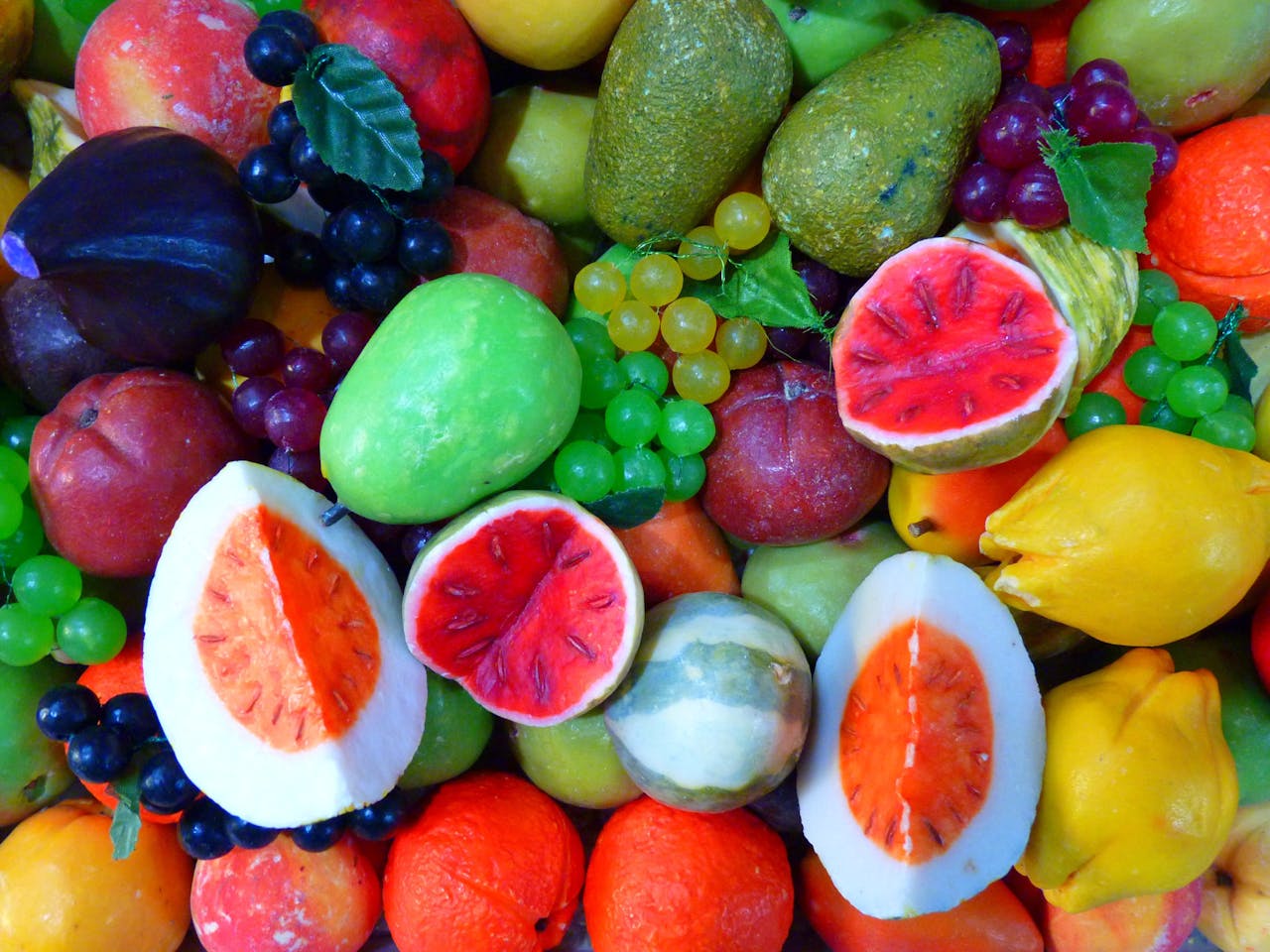Ayurveda, an ancient Indian system of natural healing, places great emphasis on the concept of Ritucharya, which refers to seasonal routines that align our lifestyle, diet, and daily practices with the changing seasons. According to Ayurveda, the shifting climate has a direct impact on our body and mind, and maintaining a balance with these changes is essential for overall well-being.

This ancient practice suggests that the three doshas (Vata, Pitta, and Kapha), which are the fundamental bodily energies in Ayurveda, are affected by seasonal variations. For instance, Kapha dosha increases during the winter months, while Pitta dosha dominates during the summer. By adapting our diet and daily routines to balance these doshas, we can maintain optimal health and prevent diseases.
In this blog post, we will explore the principles of Ritucharya in Ayurveda and how seasonal changes influence our doshas. Additionally, we will discuss how incorporating raw foods into your diet can enhance your body’s natural immunity and promote detoxification. By following these Ayurvedic guidelines, you can align your body with nature’s rhythms and experience a healthier, more balanced life.
Table of Contents
Understanding Doshas and Seasonal Changes
Before diving into the specific dietary recommendations, it’s essential to understand the concept of doshas in Ayurveda. The three doshas—Vata, Pitta, and Kapha—are the biological energies that govern the physical and mental processes in the body. Each dosha is made up of the five elements (earth, water, fire, air, and ether) and is responsible for different bodily functions.
- Vata dosha (air and ether) is associated with movement, communication, and bodily functions like circulation and respiration.
- Pitta dosha (fire and water) governs metabolism, digestion, and transformation within the body.
- Kapha dosha (earth and water) is responsible for structure, stability, and lubrication.
Ayurveda teaches that these doshas fluctuate with seasonal changes, and imbalances in any of the doshas can lead to health problems. Ritucharya helps maintain balance by adjusting our diet and lifestyle according to the dominant dosha of the season.
How Each Season Affects the Doshas
- Winter (Kapha Season): During the colder months, Kapha dosha (which governs structure, stability, and mucus production) tends to accumulate. This can lead to sluggish digestion, weight gain, and respiratory issues. To counterbalance the increase in Kapha, Ayurveda recommends eating warming, spicy foods and engaging in physical activities that stimulate circulation.
- Summer (Pitta Season): Summer brings an increase in Pitta dosha (associated with heat, metabolism, and digestion). This season can lead to overheating, skin rashes, inflammation, and digestive issues like acid reflux. Cooling foods like fruits, salads, and herbal teas are recommended to pacify Pitta during this time.
- Monsoon or Rainy Season (Vata Season): The monsoon season increases Vata dosha (responsible for movement, communication, and dryness). This can result in joint pain, dry skin, and anxiety. Ayurveda suggests eating grounding, oily foods to stabilize Vata during this season.
Ayurvedic Diet According to the Seasons
Ayurveda emphasizes consuming fresh, seasonal, and organic foods to maintain harmony with nature. Below is a guide to the types of foods recommended for each season:
Winter Diet (Kapha Balancing Foods)
- Warming Spices: Ginger, black pepper, cinnamon, and cumin should be included in your diet to stimulate digestion and counterbalance the cold, heavy qualities of Kapha.
- Cooked Vegetables: Opt for cooked, easily digestible vegetables like carrots, sweet potatoes, and beets. These help to balance the coolness of the season.
- Protein-rich Foods: Lentils, beans, and lean meats like chicken can provide the necessary warmth and energy for the body during winter.
Summer Diet (Pitta Balancing Foods)
- Cooling Fruits: Watermelon, cucumber, coconut, and pomegranate are excellent for cooling the body and balancing Pitta.
- Leafy Greens: Spinach, kale, and lettuce are perfect for reducing internal heat and inflammation.
- Hydrating Drinks: Drink plenty of herbal teas, coconut water, and fresh fruit juices to keep the body cool and hydrated during the hot months.
Monsoon Diet (Vata Balancing Foods)
- Grounding Grains: Brown rice, quinoa, and oats are ideal for stabilizing Vata.
- Oily Foods: Ghee, olive oil, and sesame oil can provide lubrication to the body and combat dryness.
- Root Vegetables: Sweet potatoes, carrots, and beets are grounding and help to calm Vata.
The Role of Raw Foods in Ayurveda
Raw foods, particularly fresh fruits, vegetables, and herbs, are highly beneficial in Ayurveda, especially during certain seasons. These foods are packed with natural enzymes, vitamins, and minerals that support digestion, boost immunity, and promote detoxification. Incorporating raw foods into your diet can help maintain the balance of Vata, Pitta, and Kapha doshas, depending on the season.
Raw Foods for Summer and Transition Seasons
In Ayurveda, raw foods are considered cooling, making them particularly beneficial during the summer and seasonal transitions when the body needs to expel excess heat and toxins. Let’s explore some raw foods that Ayurveda recommends:
- Onions: Raw onions are excellent for digestion and help cool the body by balancing Pitta dosha. They are rich in antioxidants that fight off infections and strengthen the immune system. You can consume raw onions in salads or chutneys.
- Ginger: Raw ginger is a powerhouse for digestive health. It accelerates digestion, relieves bloating, and aids in eliminating toxins from the body. A small piece of raw ginger can also increase appetite and provide relief from colds and coughs.
- Tulsi (Holy Basil): Tulsi leaves, consumed raw, have antibacterial and antiviral properties. They boost immunity and offer relief from stress and colds. In Ayurveda, Tulsi is considered a sacred plant that provides physical and emotional healing.
- Garlic: Raw garlic generates heat in the body, enhancing immunity and controlling blood pressure and cholesterol. Ayurvedic practitioners recommend consuming raw garlic for its powerful detoxifying properties, though it can also be sautéed lightly in ghee for added benefits.
- Radishes: Raw radishes are packed with fiber, making them great for improving digestion and relieving constipation. They can be consumed in salads or eaten as a snack.
- Carrots: Carrots are rich in Vitamin A, which is essential for eye health. They also boost the immune system and improve skin health. Carrot juice or raw carrot sticks are excellent ways to incorporate this vegetable into your daily diet.
- Celery: Raw celery seeds are considered hot and stimulating in Ayurveda. They aid in digestion and relieve bloating and gas. Eating raw celery can also provide immediate relief from stomach discomfort.
- Coriander: Fresh coriander leaves help cool the body and reduce acidity, making them an excellent choice during summer. Coriander can be added to salads or blended into fresh juice for a refreshing and detoxifying effect.
The Detoxifying Power of Raw Foods
Raw foods, especially leafy greens, vegetables, and herbs, play a significant role in detoxifying the body. They help cleanse the digestive tract, promote healthy skin, and eliminate toxins from the liver and kidneys. Consuming raw foods in moderation, particularly during the summer and early fall, helps purify the body and maintain a natural balance between the doshas.
Tips for Maintaining Balance When Eating Raw Foods
While raw foods are beneficial, Ayurveda advises caution, as excessive consumption can disturb the doshas, particularly during colder months when the body needs warmth. Here are a few tips to ensure balance:
- Combine raw foods with cooked meals: Eating a mix of raw and cooked foods can help maintain digestive fire (Agni).
- Avoid raw foods during winter: Since raw foods tend to have a cooling effect, it’s best to limit them during the cold winter months when Kapha dosha is predominant.
- Use warming spices: Incorporating warming spices like ginger, black pepper, and cumin into raw salads or juices can help balance the cold nature of raw foods.
Conclusion
In Ayurveda, the practice of Ritucharya offers a holistic approach to health by aligning our diet and lifestyle with the natural rhythms of the seasons. By understanding how seasonal changes affect the doshas and incorporating the right foods into our diet—both raw and cooked—we can maintain balance, boost immunity, and promote long-term health.
By following these Ayurvedic principles, you can enjoy a healthier lifestyle that is in harmony with nature. Whether it’s winter, summer, or monsoon season, there are simple and effective ways to stay balanced, prevent diseases, and lead a vibrant, energized life.
Photo by Andrea Piacquadio: https://www.pexels.com/photo/three-woman-doing-an-exercises-868757/
Photo by Valeria Ushakova: https://www.pexels.com/photo/woman-wearing-white-sleeveless-top-3094230/





